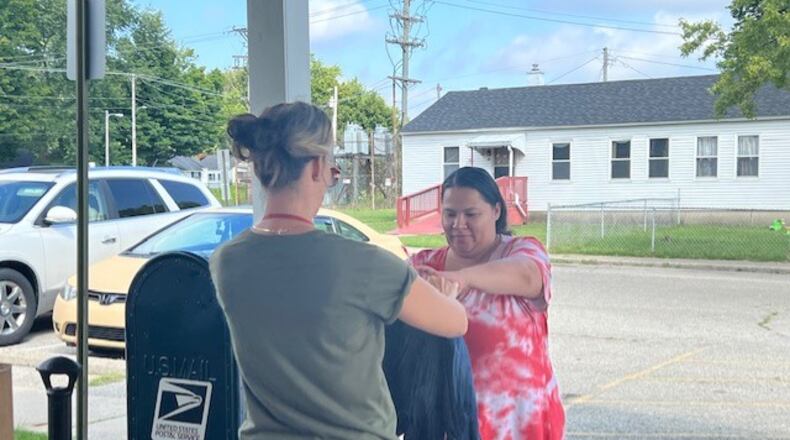DataWeave, an e-commerce analysis company, recently showed a price increase of nearly 15% on average for a basket of school supplies items, the Associated Press reported.
Deloitte’s annual back-to-school survey found that on average, parents planned to spend $661 per child shopping for back-to-school materials, up 8% from 2021 and 27% from 2019. In the survey, 57% said they were concerned about price increases due to inflation.
Jenny Alexander, a spokeswoman for Mad River Schools, said the district’s drive this year, held with Hope4Riverside, a coalition of local churches, gave out 1,500 backpacks for the area’s students. The event was held last week, and Mad River Schools begin classes on Tuesday.
Alexander said the rising costs of daily living have put an additional burden on families.
“For students whose parents cannot afford supplies, coming to school unprepared can create social and emotional challenges, in addition to putting kids at a disadvantage for learning,” Alexander said.
Jonathan Wolff, an economics professor at Miami University, said rising costs are affecting many families, including his own.
Wolff said there’s been a lot of volatility during the COVID-19 pandemic. Initially, that volatility was in items like lumber, but now it’s in gas, groceries and cars.
Wolff noted the savings that many families came into the pandemic with, from stimulus checks and staying home, are now gone, and there’s been an increase in buying on credit, which he said is a worrying sign for the economy.
“That’s going to expose households, leave them more vulnerable to unemployment and to more negative shocks,” he said.
Wolff said his family has been using more hand-me-downs, buying in bulk and buying store brands to deal with the rise in prices.
In Dayton, 400 Westwood Elementary School students got new backpacks on Aug. 15. Revival Center Ministries, which partners with Westwood, Is giving away backpacks and school supplies to all Westwood students.
Elizabeth Lolli, superintendent for Dayton Public Schools, said DPS school principals have special funds to help families who need supplies. But Lolli said donations of school supplies are always welcome. Specific lists are available on the DPS website.
Other districts who gave out backpacks included Miamisburg, Springboro, Northmont and Tipp City.
For families who are struggling to afford school supplies, many school districts said their schools can help. Ask your student’s teacher or principal for more information.
School supply numbers
8.5%: Inflation from July, per the Bureau of Labor Statistics
15%: Estimated price increase from last year, per DataWeave
$661: Average amount parents planned to spend per child, per Deloitte
About the Author



